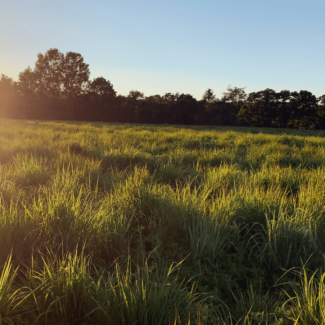Grazing Genetics
Grass Based Performance
Greenacres has a long history of raising Black Angus cattle in a grass fed and finished operation. When our founders purchased Greenacres farm in 1948 and began converting from traditional crop production to permanent pastures, improving soil health and pasture quality required grazing livestock. A herd of American Black Angus was introduced and we continue that tradition today. Despite market trends and fads of breeding large framed cattle, Greenacres has remained true to it’s focus, breeding medium framed cattle that perform on a 100% grass fed and finished diet.
Our Herd
Our herd is made up of practical, fertile, no frills cattle suited to fescue belt grazing systems. We operate a closed herd apart from incorporating genetics from breeders that share similar values to our own. Each year we market a small number of select home-bred and embryo transfer bulls through private sale. Bulls are developed on pasture throughout the grazing season and hay during a short 60 day winter period. We believe a high forage diet allows bulls to develop naturally and prevents feet and fertility issues. Grazing levels the playing field and allows the best cattle in the herd to stand out. Poor performers are not ‘propped up’ with grain. Our cattle are built for grazing and will not ‘melt’ when taken to a new farm and put out to work. We breed for low birthweight, high fertility, moderate frame, excellent temperament and reliable animal health. In recent years our breeding selection has focused on improving carcass quality from High Choice to Prime and utilizes genetics from herds such as Gardiner Angus Ranch is key to improving this aspect of our herd.
No grain or high energy supplements
Efficient cattle that turn grass into high grade carcasses
Angus genetics that rank within the top 2% nationally

Our Grass
Our healthy soils are crucial to producing high quality forages that allow our cattle to perform. Although situated in the fescue belt, we strive to promote as much plant diversity as possible. Perennial ryegrass, timothy, orchard grass and novel endophyte fescue are direct drilled into our pastures to improve the nutritional value of the stands. We target approx. 10% of the farm for winter bale grazing, followed by a warm season sorghum-sudan mix, before renovating the pasture in the Fall with our perennial mix. Frost seeding clover in Spring has been a great success in improving overall forage growth from nitrogen fixation, plus increasing protein content in our stands. We do not use any fertilizers or herbicides and instead work with nature to provide our cattle with a ‘salad bar’ of diverse grasses and legumes.
